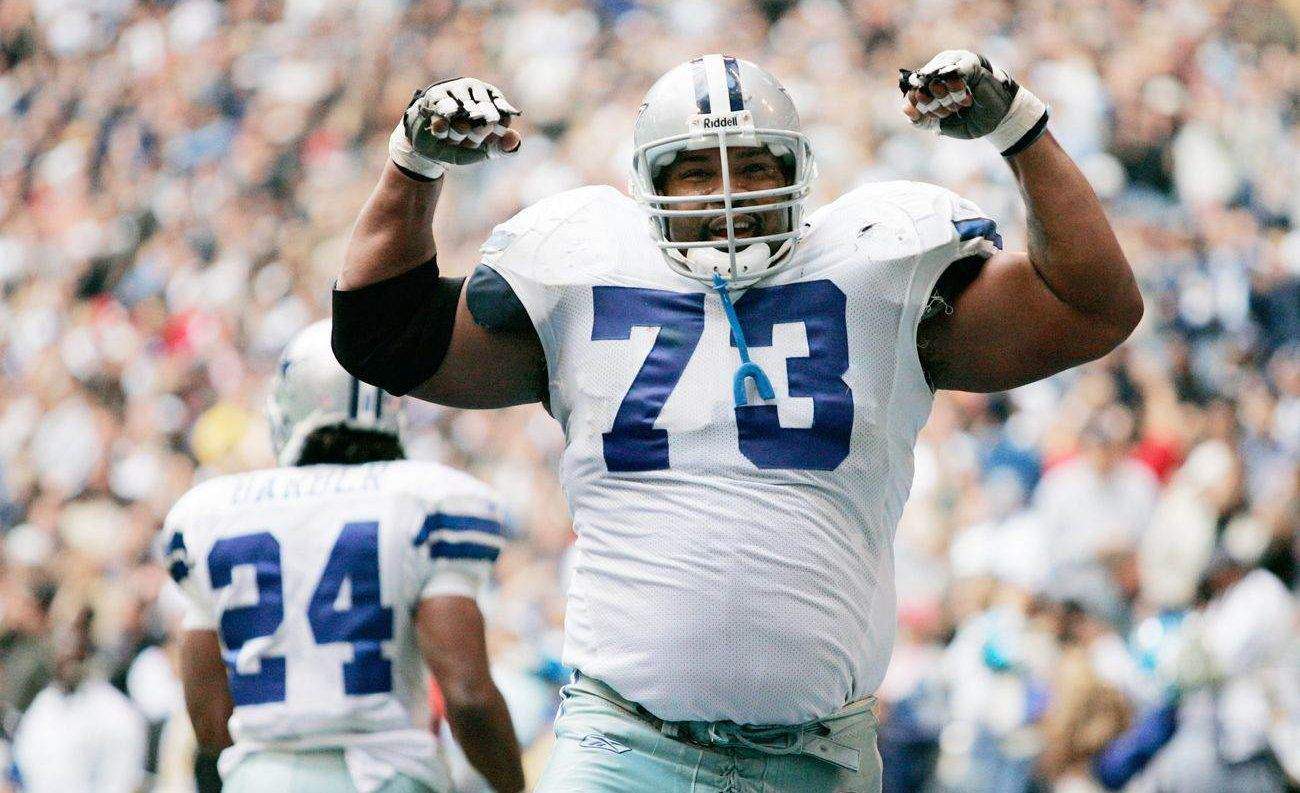When it comes to the National Football League (NFL), every position on the field is important, but none more so than the linemen. These unsung heroes are responsible for protecting the quarterback, creating holes for the running back, and disrupting the opposing team’s offense. In this blog post, we’ll take an in-depth look at NFL linemen, their training routines, how they get so big, what skills they need to have, and how much they earn. Additionally, we’ll discuss some of the best NFL linemen players of all time.

What do NFL Linemen do?
NFL linemen are the biggest players on the field, and their primary job is to protect the quarterback and create running lanes for the running back. There are two types of NFL linemen: offensive linemen and defensive linemen.
Offensive linemen are responsible for blocking the defensive linemen to create running lanes for the running back, giving the quarterback time to throw, and protecting the quarterback from getting sacked. There are five offensive linemen on the field at any given time: the center, the two guards, and the two tackles.
Defensive linemen, on the other hand, are responsible for disrupting the offense and sacking the quarterback. They are the first line of defense and are responsible for stopping the running back and pressuring the quarterback. There are three defensive linemen on the field at any given time: the nose tackle and the two defensive ends.
Training Routines for NFL Linemen
To compete at the highest level in the NFL, linemen need to have a rigorous training routine. NFL linemen typically train five to six days a week, and their workouts consist of a mix of weight training, cardio, and agility exercises.
Weight training is the most crucial aspect of their training routine, as it helps them build the strength and mass they need to excel on the field. They usually train with heavy weights, focusing on compound exercises like the squat, deadlift, and bench press. In addition to these, they also perform isolation exercises like bicep curls, tricep extensions, and calf raises.
Agility and speed training are also essential for NFL linemen. They perform drills to improve their footwork, explosiveness, and reaction time. They also practice ladder drills, cone drills, and jumping exercises to improve their quickness and agility.
How do NFL Linemen get so big?
NFL linemen are known for their size and strength, and for good reason. They are some of the biggest and strongest athletes in the world. But how do they get so big?
To become an NFL lineman, you need to have a large frame to start with. But, in addition to that, they need to have a strict diet and training regimen. They eat a lot of high-protein foods like chicken, beef, and fish to build muscle. They also consume a lot of carbohydrates to fuel their workouts and keep their energy levels high. NFL linemen typically consume between 6,000 and 8,000 calories per day.
Additionally, they train with heavy weights to build muscle mass. They focus on compound exercises like the squat, deadlift, and bench press, which target multiple muscle groups simultaneously. They also perform isolation exercises to target specific muscles and improve their strength.
How much do NFL Linemen weigh and how tall are they?
NFL linemen are some of the biggest and tallest athletes in the world. The average weight for an offensive lineman is around 310 pounds, and the average weight for a defensive lineman is around 280 pounds. However, there are many linemen who weigh over 350 pounds.
In terms of height, NFL linemen are typically taller than the average person. The average height for an offensive lineman is around 6’4″, and the average height for a defensive
Due to the physical demands of the position, NFL linemen often have short careers. The average NFL career lasts just three and a half years, and many linemen retire due to injury or wear and tear on their bodies. However, successful linemen can earn significant amounts of money during their careers.
According to Spotrac, the average salary for an NFL offensive lineman in 2021 was $3.4 million per year, while the average salary for a defensive lineman was $4.7 million per year. The highest-paid linemen can earn well over $10 million per year.
Some of the best linemen in NFL history include players like Reggie White, who was known as the “Minister of Defense” and was one of the most dominant defensive linemen of all time. White had a career that spanned 15 seasons, during which he recorded 198 sacks and was named to 13 Pro Bowls.
Another great lineman was Bruce Smith, who played for 19 seasons and recorded 200 sacks, which is the most of any player in NFL history. He was named to 11 Pro Bowls and was inducted into the Pro Football Hall of Fame in 2009.
Other legendary linemen include Anthony Munoz, who played 13 seasons for the Cincinnati Bengals and was named to 11 Pro Bowls, and Deacon Jones, who was known for coining the term “sack” and was named to eight Pro Bowls during his career.
In conclusion, NFL linemen are an essential part of any football team and play a vital role in both offensive and defensive strategies. They are some of the largest and strongest athletes in professional sports, and their training routines and dedication to the sport are unparalleled. While the career of an NFL lineman can be short-lived, those who are successful can earn significant amounts of money and leave a lasting legacy on the game. The best linemen in NFL history are some of the most impressive and dominant players to ever step on the field, and their legacies will continue to be celebrated for generations to come.
